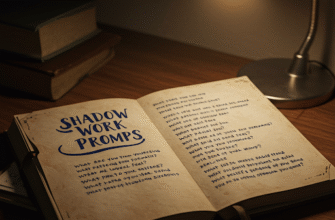Discover Spiritual Symbols and Their Meanings
A journey into the heart of ancient wisdom, exploring the profound meanings hidden within spiritual symbols.
The Enduring Power of Symbols
Throughout human history, symbols have served as powerful tools for communication, storytelling, and spiritual expression. They transcend language barriers, tapping into universal archetypes and conveying complex ideas in a single, potent image. From ancient civilizations to modern-day spiritual practices, symbols continue to resonate with us on a deep, intuitive level. Understanding these symbols can unlock a deeper understanding of ourselves, our world, and the mysteries of the universe. I remember reading Carl Jung years ago, and his writing on archetypes really opened my eyes to the power of symbols in the unconscious mind. It’s not just about what you consciously see; it’s about what your soul recognizes.
Symbols are not merely decorations; they are condensed wisdom, embodying centuries of accumulated knowledge and spiritual insight. They act as keys, unlocking hidden pathways to enlightenment and self-discovery. They connect us to a rich tapestry of cultural and spiritual traditions, reminding us of our shared humanity and the timeless quest for meaning.
Symbols are often culturally specific, and their meanings can vary across different traditions. It’s important to research the origins and context of a symbol to understand its intended meaning. Don’t just assume you know; do your homework!
Ancient Symbols and Their Significance
The Ankh: Symbol of Eternal Life
The Ankh, an iconic symbol of ancient Egypt, represents eternal life. Its loop symbolizes the eternal soul, while the cross represents the material world. Together, they signify the union of heaven and earth, the merging of the spiritual and the physical. It’s often depicted being held by gods and pharaohs, bestowing the gift of eternal life or representing their divine power. I once saw a documentary about Tutankhamun, and the sheer number of Ankh symbols in his tomb was staggering. It really drove home how central this symbol was to their beliefs about the afterlife.
Beyond its association with eternal life, the Ankh also symbolizes fertility, rebirth, and the life-giving power of water. Its shape is reminiscent of a key, suggesting that it holds the key to unlocking the secrets of life and death. The Ankh continues to be used today, often as a symbol of Egyptian heritage and spirituality.
The Om: The Sound of the Universe
Om (Aum), a sacred sound and symbol in Hinduism, Buddhism, and Jainism, represents the essence of the universe. It is considered the first sound that emanated from creation, the primordial vibration that sustains all existence. Chanting Om is believed to purify the mind, calm the nervous system, and connect us to the divine. It’s a sound that resonates deep within, a reminder of our connection to everything. I’ve practiced meditation with Om chanting for years, and I can honestly say it’s had a profound impact on my inner peace and clarity.
The symbol itself is composed of three curves, a dot, and a crescent. The lower curve represents the waking state, the upper curve represents the dream state, and the middle curve represents the deep sleep state. The dot represents the absolute state of consciousness, and the crescent symbolizes illusion (maya) that separates us from this state. Together, they represent the entire spectrum of human consciousness and the path to enlightenment.
While Om is a powerful sound and symbol, it’s important to approach it with respect and understanding. Avoid using it casually or disrespectfully, as it holds deep spiritual significance for many people. It’s not just a trendy yoga thing; it’s a sacred mantra.
The Yin and Yang: Harmony and Balance
The Yin and Yang symbol, originating from ancient Chinese philosophy, represents the interconnectedness of opposing forces. Yin, the dark swirl, embodies feminine energy, passivity, darkness, and coolness. Yang, the light swirl, embodies masculine energy, activity, light, and warmth. These forces are not in opposition but rather complementary, constantly interacting and balancing each other. Within each swirl is a seed of the opposite, illustrating that nothing is purely one way or the other. I’ve always been drawn to the Yin and Yang symbol because it perfectly captures the duality of life and the importance of finding balance in everything we do. It’s a reminder that even in darkness, there is light, and vice versa.
The Yin and Yang symbol teaches us that harmony and balance are essential for well-being. It encourages us to embrace both the light and the dark aspects of ourselves and the world around us. It’s a reminder that opposites attract and that true strength lies in finding equilibrium.
Symbols from Different Cultures
The Hamsa: Protection Against the Evil Eye
The Hamsa, also known as the Hand of Fatima or the Hand of Miriam, is a popular amulet in Middle Eastern and North African cultures believed to protect against the evil eye. It’s typically depicted as an open right hand with an eye in the center. The five fingers represent the five pillars of Islam for some, or the five books of the Torah for others. Regardless of the specific interpretation, the Hamsa is a symbol of protection, blessings, power, and strength. My grandmother always wore a Hamsa pendant, and she swore it kept her safe from harm. It’s more than just a piece of jewelry; it’s a tangible symbol of faith and protection.
The eye in the center of the Hamsa is believed to ward off the evil eye, a curse believed to be cast by a malevolent glare. The Hamsa is often adorned with other protective symbols, such as the Star of David or the fish. It’s a powerful symbol of faith and protection, used for centuries to ward off negativity and bring good fortune.
The Celtic Knot: Eternity and Interconnectedness
Celtic knots, intricate patterns composed of interlaced lines, are a hallmark of Celtic art and spirituality. They represent eternity, interconnectedness, and the cyclical nature of life. The endless loops symbolize the continuous flow of time and the interconnectedness of all things. Each knot is unique and intricate, reflecting the complexity and beauty of the universe. I remember visiting Ireland and being captivated by the Celtic knots carved into ancient stones. They seemed to hold a deep sense of mystery and wisdom, a connection to a distant past.
There are many different types of Celtic knots, each with its own unique meaning. Some common knots include the Trinity Knot (Triquetra), representing the Holy Trinity in Christianity or the threefold nature of the goddess in Celtic paganism, and the Celtic Cross, a symbol of faith and heritage. Celtic knots are a reminder of our interconnectedness and the enduring power of the human spirit.
The Dreamcatcher: Filtering Bad Dreams
The Dreamcatcher, originating from Native American cultures, is a handmade web of woven threads, feathers, and beads believed to filter bad dreams and allow only good dreams to pass through. It’s typically hung above a bed or sleeping area, where it can catch negative energy and protect the sleeper from nightmares. The good dreams are said to slip through the holes in the web and slide down the feathers to the sleeper. I made a dreamcatcher when I was a child, and I remember feeling a sense of peace and security knowing it was there to protect me. It’s a beautiful symbol of hope and protection, a reminder that we can overcome our fears and embrace positive energy.
The Dreamcatcher is a powerful symbol of protection and spiritual well-being. It represents the connection between the physical and spiritual worlds and the power of intention. It’s a reminder that we have the ability to shape our dreams and create a more positive reality.
When obtaining a Dreamcatcher, it’s respectful to learn about its cultural origins and to purchase it from Native American artisans whenever possible. Avoid buying mass-produced imitations, as they often lack the spiritual significance and authenticity of traditionally made Dreamcatchers. Supporting indigenous artists helps preserve their cultural heritage.
Modern Interpretations and Uses of Spiritual Symbols
Spiritual symbols continue to be relevant and meaningful in the modern world. They are used in a variety of ways, from jewelry and art to tattoos and spiritual practices. Many people find comfort and inspiration in wearing or displaying symbols that resonate with their beliefs and values. Symbols can serve as a reminder of our intentions, our connection to something larger than ourselves, and our commitment to personal growth.
In a world that often feels chaotic and disconnected, spiritual symbols can provide a sense of grounding and meaning. They can help us to connect with our inner selves, to find peace and clarity, and to live more authentically. Whether you are drawn to ancient symbols or modern interpretations, exploring the world of spiritual symbols can be a rewarding and transformative journey.
The Psychology of Symbols
Carl Jung, a prominent figure in psychology, extensively studied symbols and their role in the human psyche. He believed that symbols are not merely arbitrary representations but rather expressions of universal archetypes, innate patterns of behavior and imagery residing in the collective unconscious. According to Jung, these archetypes are inherited and shared by all humanity, and they manifest in our dreams, myths, and religious beliefs. Symbols, therefore, act as bridges between the conscious and unconscious mind, allowing us to access and integrate these deeper aspects of ourselves.
Jungian psychology suggests that understanding symbols can lead to greater self-awareness and personal growth. By exploring the symbols that resonate with us, we can gain insights into our hidden desires, fears, and motivations. This process of self-discovery can be challenging but ultimately rewarding, leading to a more authentic and fulfilling life. I found this to be especially true when I was going through a tough period in my life. Journaling about my dreams and the symbols that appeared in them helped me understand what I was truly feeling and what I needed to do to heal.
Creating Your Own Symbols
While many spiritual symbols have deep historical and cultural roots, you can also create your own personal symbols to represent your unique values, beliefs, and experiences. A personal symbol can be anything that holds special meaning for you, such as a particular animal, plant, color, or shape. The key is to choose something that resonates with your heart and soul, something that embodies what is most important to you. It can be a fun and creative exercise. I often create small doodles that represent goals or feelings. No one else has to understand them, just me.
Once you have chosen your symbol, take time to reflect on its meaning and how it relates to your life. You can use your symbol as a visual reminder of your intentions, as a tool for meditation, or as a source of inspiration and guidance. The possibilities are endless. The act of creating your own symbol can be a powerful way to connect with your inner wisdom and to express your unique creativity.
Be mindful of cultural appropriation when choosing or creating symbols. Avoid using symbols from cultures that are not your own without proper understanding and respect. Always research the origins and meanings of symbols before using them, and be sensitive to the cultural context in which they are used. It’s better to be informed and respectful than to cause offense unintentionally.








